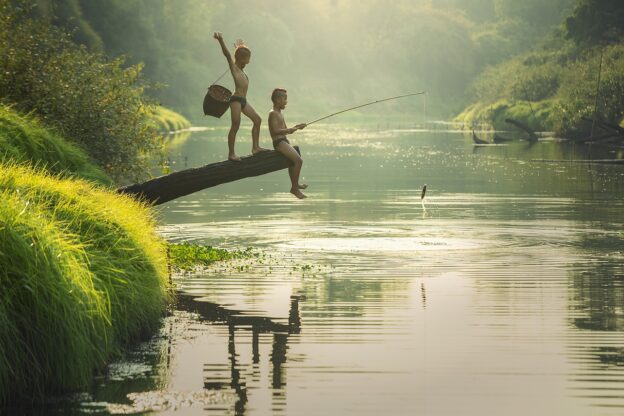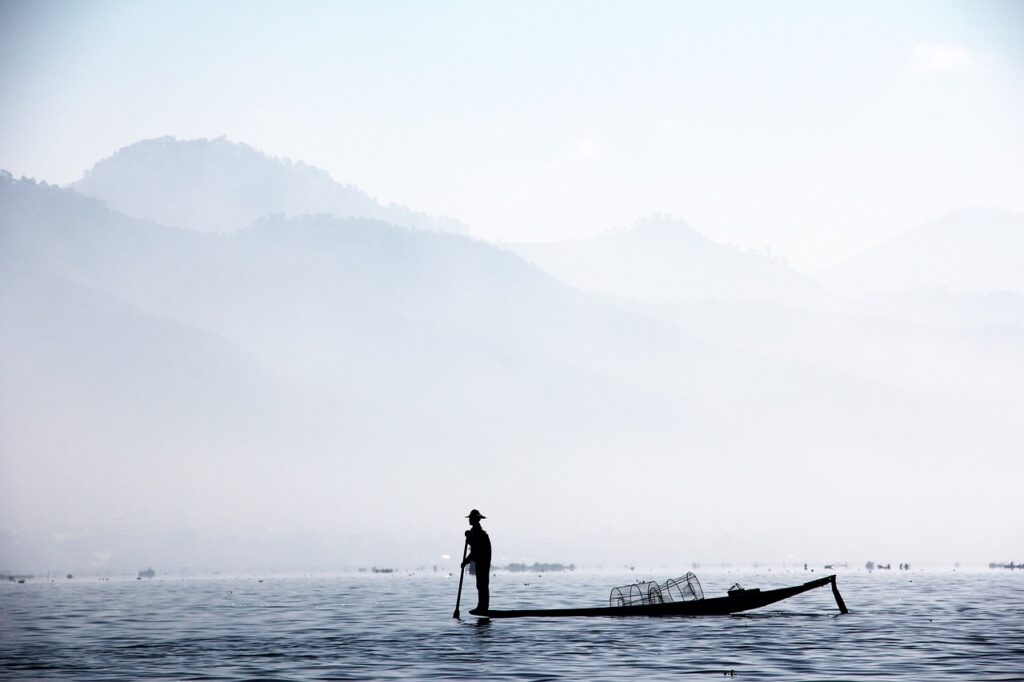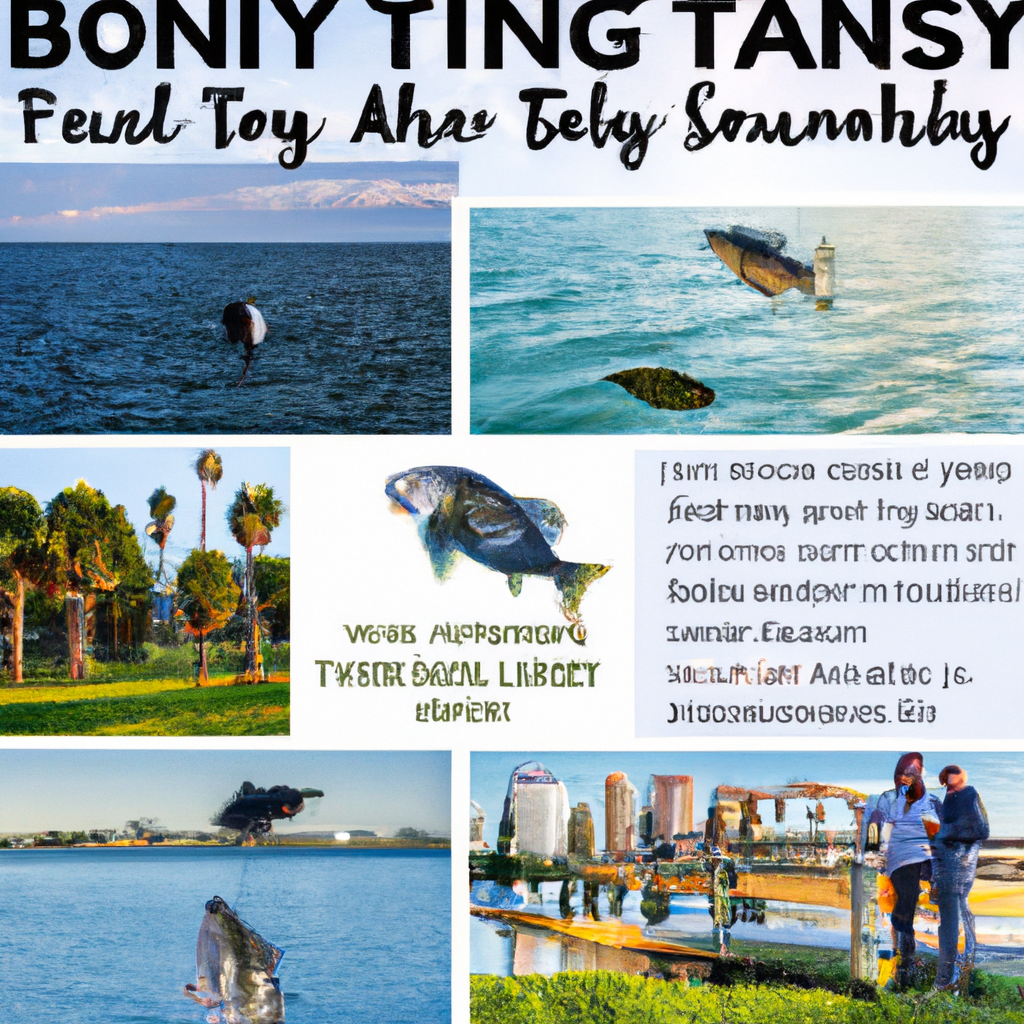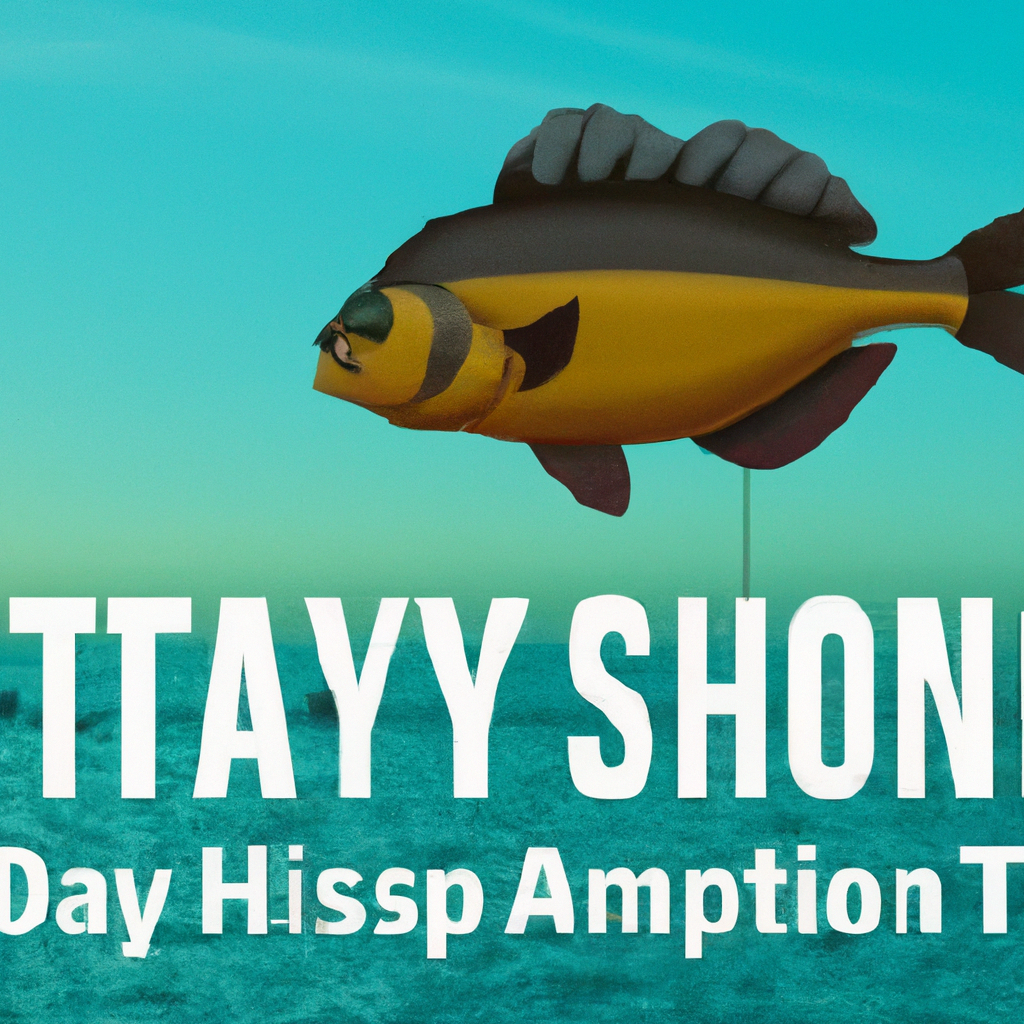Are you ready to cast your line and reel in an unforgettable fly fishing experience in the Tampa Bay area? Look no further! This article is your go-to guide for expert tips and tricks on how to make the most of your fly fishing adventure. From choosing the perfect fly to finding the best spots for a successful catch, we’ve got you covered. So grab your rod, pack your gear, and get ready to immerse yourself in the beauty and excitement of fly fishing in one of Florida’s most vibrant and thriving fishing destinations.
Choosing the right equipment
When it comes to fly fishing in the Tampa Bay area, choosing the right equipment is essential to ensure a successful and enjoyable fishing experience. Let’s start by discussing a few key aspects to consider when selecting the appropriate fly rod.
Selecting the appropriate fly rod
The fly rod is the foundation of your fly fishing setup, so it’s important to choose one that suits your fishing style and the local conditions. In Tampa Bay, where you’ll encounter a variety of fish species, a versatile fly rod is recommended. A 9-foot, 6 weight rod is a popular choice as it offers enough power to handle larger fish while still providing the necessary delicacy for more finesse situations.
Choosing the right fly line
Matching your fly rod with the right fly line is crucial for achieving optimal casting distance and accuracy. In the Tampa Bay area, where you’ll often be targeting fish in shallow waters, a floating line is typically used. Look for a weight-forward floating line that matches the weight designation of your fly rod, as this will help you load the rod more efficiently and cast with ease.
Picking the right flies
Selecting the right flies can make all the difference when it comes to enticing fish to bite. Familiarize yourself with the local fish species and their preferred prey to choose flies that mimic their natural food sources. In Tampa Bay, popular fly patterns include Clouser Minnows, Merkins, and EP Shrimp. It’s also beneficial to have a variety of sizes and colors in your fly box to adapt to changing conditions and fish preferences.
Understanding the local fish species
Before you embark on your fly fishing adventure in Tampa Bay, take the time to familiarize yourself with the common fish species you may encounter. This knowledge will help you understand their habits, behavior, and preferred habitats, giving you a better chance of success.
Identifying common fish species in Tampa Bay
Tampa Bay is home to a diverse range of fish species, including Redfish, Snook, Trout, Tarpon, and Flounder, among others. Each species has its own unique characteristics, such as distinct coloration and patterns, which can aid in identification. Familiarize yourself with field guides, online resources, and local fishing experts to confidently identify the fish you encounter.
Learning about their habits and behavior
Understanding the habits and behavior of the fish species in Tampa Bay can greatly increase your chances of success. For example, Redfish are known to feed aggressively in shallow waters during high tide, while Snook are more active during low-light periods such as dawn and dusk. Learning about their feeding patterns, preferred prey, and seasonal behaviors will help you target them more effectively.
Knowing their preferred habitats
Fish species in Tampa Bay inhabit a variety of environments, including grass flats, mangrove shorelines, oyster bars, and deeper channels. Familiarize yourself with these different habitats and consider the specific conditions that attract each species. For instance, Snook are often found near mangroves, while Trout tend to frequent grassy areas. Knowing these preferred habitats will guide you in selecting suitable fishing spots.

This image is property of pixabay.com.
Researching the fishing spots
To make the most of your fly fishing experience in Tampa Bay, it’s essential to research and explore popular fishing locations. By finding productive areas and understanding tide and current patterns, you can maximize your chances of hooking into some trophy fish.
Exploring popular fishing locations in Tampa Bay
Tampa Bay offers a plethora of fishing spots, each with its own unique characteristics and target species. Popular locations include Fort De Soto Park, Weedon Island Preserve, and Anclote Key. Research local fishing reports, talk to fellow anglers, and consult with local bait and tackle shops to gain insights into the best spots for fly fishing in the area.
Finding productive areas for fly fishing
When selecting fishing spots, look for areas where fish are likely to congregate. Points, drop-offs, channel edges, and flats with seagrass are often productive spots in Tampa Bay. Pay attention to structures, such as docks or bridges, which provide shelter for fish. Also, keep an eye out for birds diving and baitfish activity, as this can indicate the presence of feeding fish.
Understanding tide and current patterns
Tides play a crucial role in the behavior and feeding patterns of fish in Tampa Bay. Familiarize yourself with the tide charts and learn how different species react to changing tide conditions. As the tide rises or falls, fish may move to different areas in search of food. Additionally, understanding the current patterns can help you position yourself effectively and present your fly in a natural manner.
Mastering casting techniques
To effectively present your fly to the fish in Tampa Bay, mastering casting techniques is essential. By practicing basic fly casting, improving accuracy and distance, and learning specialty casts, you can increase your chances of success on the water.
Practicing basic fly casting
Start by mastering the basic fly casting technique, called the overhead cast. This cast involves smoothly accelerating the fly rod backwards and forwards in a straight line, allowing the line to unfurl behind you and deliver the fly to your desired target. Practice in an open area, focusing on a smooth and controlled motion, and gradually increase your casting distance.
Improving accuracy and distance
As you become comfortable with the basic cast, work on improving your accuracy and distance. Practice casting to specific targets, such as floating markers or imaginary fish. Experiment with different casting angles and fine-tune your timing and power to consistently hit your mark. Building muscle memory through regular practice sessions will greatly enhance your casting abilities.
Learning specialty casts for different conditions
In addition to the basic cast, learning specialty casts can help you adapt to different fishing conditions. For instance, the roll cast is useful when fishing in tight quarters or when dealing with obstructions. The double haul cast allows you to generate more line speed for longer casts. Familiarize yourself with these specialty casts and practice them to expand your casting repertoire.

This image is property of pixabay.com.
Learning about local regulations and permits
Before you head out for your fly fishing adventure in Tampa Bay, it’s important to understand and abide by the local regulations and permit requirements. By knowing the fishing license requirements, researching specific fishing regulations, and obtaining necessary permits if applicable, you can ensure a legal and responsible fishing experience.
Understanding fishing license requirements
In Florida, a fishing license is required for both residents and non-residents over the age of 16. There are different types of licenses available, including freshwater and saltwater options. Make sure to obtain the appropriate license for fly fishing in saltwater areas like Tampa Bay. Licenses can be purchased online, at local bait and tackle shops, or through the Florida Fish and Wildlife Conservation Commission (FWC) website.
Researching specific fishing regulations in Tampa Bay
To ensure compliance with local fishing regulations, research and familiarize yourself with the specific rules and limitations in Tampa Bay. Regulations may include fish size limits, bag limits, and closed seasons for certain species. Stay up-to-date on any changes in regulations and consult the FWC website or local fishing authorities for the most current information.
Obtaining necessary permits if applicable
In addition to fishing licenses, certain areas in Tampa Bay may require additional permits or fees. For example, some parks or wildlife preserves may have specific regulations in place, or access to certain areas may be restricted. Always check with the local authorities and obtain any necessary permits or passes before venturing into these areas to avoid any penalty or disruption to your fishing plans.
Planning for the right time of year
To increase your chances of success when fly fishing in Tampa Bay, it’s important to plan your fishing trips during the right time of year. By considering weather and temperature, knowing seasonal patterns for target fish, and understanding migration and feeding habits, you can optimize your fishing opportunities.
Considering weather and temperature
Tampa Bay experiences a mild climate for most of the year, but weather patterns can greatly impact fishing conditions. Pay attention to temperature changes, wind direction, and storms. Cooler water temperatures in winter may push fish into deeper waters, while warmer temperatures in summer may lead to increased activity closer to the surface. Adjust your tactics accordingly and be aware of any weather advisories or unsafe conditions.
Knowing seasonal patterns for target fish
Different fish species in Tampa Bay exhibit seasonal patterns that can influence their behavior and feeding habits. For example, Tarpon migration typically occurs in the spring and summer, presenting excellent opportunities for fly anglers. Redfish and Snook are more active in warmer months, while Trout fishing is generally better during cooler months. Research the seasonal patterns for your target species to plan your trips accordingly.
Understanding migration and feeding habits
Migration and feeding habits play a crucial role in determining where fish will be found and what they will be eating. Understanding these patterns can significantly improve your chances of hooking into a trophy catch. For instance, during baitfish migrations, predator fish like Snook and Trout may actively feed near passes or mangrove edges. Keep an eye out for signs of feeding activity and adjust your fly choice and presentation accordingly.

This image is property of pixabay.com.
Utilizing effective fly fishing techniques
Beyond mastering casting techniques, exploring various retrieves, using surface and subsurface techniques, and understanding when to use different flies will help you become a more effective fly angler in Tampa Bay.
Exploring various retrieves
When retrieving your fly, experiment with different techniques to mimic a natural prey and entice fish to strike. Popular retrieves include the classic strip retrieve, where you retrieve the line in short, sharp pulls, and the steady retrieve, where you maintain a consistent speed. Vary your retrieve speed, pauses, and lengths to imitate the movements of different prey species and trigger fish to bite.
Using surface and subsurface techniques
Tampa Bay offers opportunities for both topwater and subsurface fly fishing. Surface techniques, such as poppers or sliders, create enticing splashes or imitate injured baitfish. Subsurface techniques, like streamers or baitfish patterns, can be highly effective for species like Redfish and Trout. Pay attention to the fish’s feeding behavior and adapt your techniques to present your fly at the desired depth.
Understanding when to use different flies
Having a diverse selection of flies in your fly box will allow you to match the hatch and present your fly in a way that appeals to the fish. In Tampa Bay, where a variety of baitfish, shrimp, and crustaceans are present, it’s important to carry patterns that imitate these prey. Adjust your fly selection based on the target species, prevailing conditions, and the fish’s feeding preferences.
Using proper fly fishing knots
Proper knot tying is essential for ensuring the strength and reliability of your fly fishing setup. By mastering essential knots, learning loop knots for fly attachments, and practicing knot tying, you can have confidence in your knots and minimize the risk of losing fish.
Mastering essential knots for fly fishing
There are several essential knots that every fly angler should master. The improved clinch knot is commonly used to secure the fly to the leader. The loop-to-loop connection allows you to attach a leader or tippet without tying knots directly to the fly line. Practice these knots until you can tie them quickly and properly to ensure a secure connection between your fly line, leader, and fly.
Learning loop knots for fly attachments
Loop knots can be useful for attaching flies, particularly when using streamers or larger patterns. The non-slip loop knot, for example, allows the fly to have more freedom of movement in the water, mimicking the natural behavior of prey. Experiment with different loop knots and find the one that suits your fishing style and provides the desired action for your fly.
Practicing knot tying for strength and reliability
Regularly practicing knot tying is crucial for developing muscle memory and ensuring that your knots are tied correctly. Use proper tension when tying knots, and always check that they are tight and secure before casting. Wetting the knot before tightening it can help reduce friction and increase strength. Remember, a strong and reliable knot is crucial when battling big fish or in challenging fishing conditions.

Tips for wading in Tampa Bay
Wading can be a highly effective technique when fly fishing in Tampa Bay, as it allows you to access shallow areas and get closer to the fish. However, it’s important to take precautions and equip yourself properly for a safe and enjoyable wading experience.
Choosing appropriate wading gear
Investing in proper wading gear is essential for staying comfortable and safe while wading. Opt for high-quality wading boots with good traction to prevent slipping on slippery surfaces. Neoprene waders are suitable for cooler months, while lightweight breathable waders are ideal for warmer conditions. Make sure your gear fits well and consider wearing a wading belt for additional safety.
Understanding water currents and safety
Before wading, assess the water currents and be aware of any potential hazards. Understand how tides and currents can affect water depth and flow, and plan your wading accordingly. Always wade carefully and use a wading staff for stability, especially in swift or uneven waters. Keep an eye on changing conditions and be prepared to adjust your fishing area or techniques if necessary.
Navigating various types of terrains
When wading in Tampa Bay, you’ll encounter various types of terrains, including sandy flats, oyster bars, and grassy areas. Take care when walking on oyster bars, as their sharp shells can cause injury. Move slowly and shuffle your feet to avoid stepping on hidden obstacles. Familiarize yourself with the terrain you’ll be wading in and practice good foot placement to minimize the risk of accidents.
Taking care of the environment
As responsible fly anglers, it’s important to prioritize the well-being of the environment we enjoy. By practicing catch and release, using barbless hooks, and properly disposing of waste and litter, we can help preserve Tampa Bay’s natural resources for future generations.
Practicing catch and release
Whenever possible, practice catch and release to promote sustainable fishing and help maintain healthy fish populations. Handle fish gently and minimize their time out of the water. Use appropriate landing nets and wet your hands before touching the fish to reduce damage to their protective slime layer. Release the fish quickly and support them underwater until they regain their strength.
Using barbless hooks to minimize harm
Using barbless hooks can help minimize harm to fish during catch and release. Barbless hooks are easier to remove, reducing the risk of injury to the fish and simplifying the release process. Carry a pair of forceps or hemostats to safely remove hooks, and consider flattening the barb on your flies or using pre-barbless hooks to make the process smoother and more fish-friendly.
Properly disposing of waste and litter
Keep Tampa Bay and its surrounding areas clean by properly disposing of waste and litter. Carry a small trash bag with you and pack out any garbage, including broken line, used flies, and packaging materials. Dispose of waste in designated trash receptacles or take it with you until you can properly dispose of it. Avoid leaving any trace of your presence and help preserve the natural beauty of Tampa Bay.
By following these tips and strategies, you can enhance your fly fishing experience in the Tampa Bay area. Remember to always prioritize safety, respect the environment, and enjoy the thrill of fly fishing in one of Florida’s premier angling destinations!













